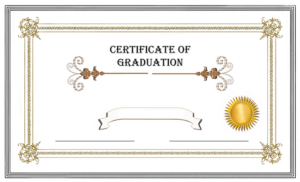Crafting Global Impact: Your Personal Statement Guide for Multilingual Success
Personal Statements (or Statements of Purpose) are crucial documents in university applications and scholarship processes, offering a holistic view of applicants beyond academic metrics. They showcase personality, aspirations, and motivations, highli…….
Personal Statements (or Statements of Purpose) are crucial documents in university applications and scholarship processes, offering a holistic view of applicants beyond academic metrics. They showcase personality, aspirations, and motivations, highlighting writing skills, critical thinking, and passion for chosen fields. Effective language choice reveals communication skills and cultural background, while a well-structured narrative tells an engaging academic and personal journey. Crafting compelling statements requires navigating cross-cultural communication and demonstrating respect for diverse backgrounds. An engaging SoP highlights key experiences, growth, and passion, with logical structure, consistent voice, and specific examples. Editing, proofreading, professional translation, and customization for international applications are vital to making a strong first impression on admission committees.
Crafting a compelling personal statement or statement of purpose (SoP) is a significant step in your academic or professional journey. Whether applying domestically or internationally, your SoP serves as your voice, showcasing who you are and why you’re a strong candidate. This guide delves into the essence of personal statements, offering insights on language choice, structuring content, cultural sensitivity, and effective writing tips. By following these guidelines, you’ll create an engaging SoP that stands out in any application process.
- Understanding Personal Statements/Statements of Purpose: Definition and Purpose
- Language Considerations: Choosing the Right Language for Your Statement
- Content Structure: Key Elements to Include in Your Statement
- Cultural Sensitivity: Navigating Cross-Cultural Communication
- Effective Writing Tips: Crafting a Compelling Narrative
- Editing and Proofreading: Ensuring Clarity and Professionalism
- Submission Guidelines: Tips for Submitting Your Personal Statement Internationally
Understanding Personal Statements/Statements of Purpose: Definition and Purpose
Personal Statements, or Statements of Purpose, are essential components of university applications and scholarships. They serve as a window into the candidate’s personality, aspirations, and motivations. Beyond academic achievements and test scores, these statements provide insights into who you are, what drives you, and why you’re a perfect fit for the program or opportunity you’re applying to. Crafting a compelling personal statement is your chance to tell your unique story, highlighting experiences and qualities that set you apart.
The purpose of a Personal Statement is multifaceted. It allows admissions officers or scholarship committees to assess your writing skills, critical thinking abilities, and self-awareness. More importantly, it demonstrates your passion for your field of study or the cause you’re advocating for. By sharing personal anecdotes and reflecting on life experiences, you humanize your application, making it more memorable and persuasive. Ultimately, a well-crafted Statement of Purpose can significantly influence your chances of acceptance or award.
Language Considerations: Choosing the Right Language for Your Statement
When crafting your personal statements or statements of purpose, considering the language is a strategic step that can greatly impact your application. The choice of language for these written pieces is significant as it reflects your communication skills and cultural background, especially when applying to international institutions or programs.
Selecting the appropriate language allows you to convey your ideas and experiences effectively. While some applications may accept multiple languages, using the primary language of instruction at the institution or program can demonstrate your commitment and proficiency in that specific linguistic environment. This decision is particularly important for personal statements and statements of purpose, as they often require a nuanced and sophisticated style of writing to showcase your unique perspective and voice.
Content Structure: Key Elements to Include in Your Statement
When crafting your personal statements or statements of purpose, a well-structured content is crucial to making a compelling case for yourself. Your statement should have a clear introduction that captures the reader’s attention and provides a snapshot of your academic and professional background. Body paragraphs are where you delve into key elements such as your motivations, achievements, and goals.
In these sections, detail why you’ve chosen your field of study or career path, highlighting any unique experiences or challenges that have shaped your perspective. Share specific examples of projects, internships, or volunteer work that demonstrate your passion and commitment. Conclude by summarizing your aspirations and how the program or institution aligns with your future goals. Ensure a cohesive narrative flows throughout, making your statement engaging and memorable.
Cultural Sensitivity: Navigating Cross-Cultural Communication
Submitting personal statements or statements of purpose in a global academic landscape requires navigating cross-cultural communication, an essential aspect often overlooked. With applications that attract students and scholars from diverse linguistic backgrounds, understanding cultural sensitivity is vital for crafting compelling statements. This involves recognizing and appreciating different communication styles, values, and norms that shape the way experiences are expressed and perceived.
When writing your personal statement, remember that cross-cultural communication is a two-way street. It’s about not only presenting yourself authentically but also demonstrating an awareness of and respect for the diverse cultural backgrounds of your readers. This might involve adapting your language and style to be more inclusive, clear, and accessible, ensuring your message resonates with a global audience. Such sensitivity fosters understanding, strengthens connections, and enhances the overall impact of your personal statements or Statements of Purpose.
Effective Writing Tips: Crafting a Compelling Narrative
Crafting a compelling personal statement or statement of purpose (SoP) is an art that can significantly impact your application’s success. These written pieces are often your first impression on admission committees, so they should be well-crafted narratives that showcase your unique journey and aspirations.
To create an effective SoP, start by telling a story that highlights key moments in your academic or personal life. Use these experiences to demonstrate your growth, resilience, and passion for your field of interest. Structure your narrative with a clear beginning, middle, and end, ensuring each paragraph flows logically. Maintain a consistent voice that reflects your personality while adhering to the language and tone requirements of the application. Incorporate specific examples and anecdotes to make your statement memorable and authentic. Remember, an engaging SoP not only communicates your qualifications but also provides insight into who you are as an individual.
Editing and Proofreading: Ensuring Clarity and Professionalism
Editing and proofreading your personal statements or statements of purpose (SOP) are crucial steps in refining your application materials. These final touches can significantly impact the overall quality and professionalism of your written content. A well-edited SOP not only showcases your attention to detail but also communicates your ideas clearly and effectively.
When editing, focus on sentence structure, grammar, and clarity. Ensure your writing flows smoothly and that each paragraph aligns with the central theme. Remove any unnecessary words or phrases that might clutter your text. Proofreading involves a more meticulous review, checking for typos, formatting consistency, and ensuring all references are accurate. It’s advisable to proofread several times at different intervals; this approach can help catch errors that may have been overlooked during initial editing.
Submission Guidelines: Tips for Submitting Your Personal Statement Internationally
When submitting your personal statements or statements of purpose internationally, there are a few key tips to keep in mind. First and foremost, ensure that all documents are translated into the language required by the institution. Accuracy is paramount; professional translation services can help maintain the nuance and meaning of your original text.
Additionally, familiarize yourself with each university’s specific submission guidelines, as they may vary greatly. This includes checking file formats, word limits, and any additional materials requested. Remember to proofread thoroughly to avoid grammatical errors or awkward phrasing that could detract from your statement’s impact.
Crafting a compelling personal statement or statement of purpose is a significant step in any application process. By understanding the essential elements, considering cultural sensitivity, and employing effective writing techniques, you can create a powerful narrative that highlights your unique journey. Remember, clarity, professionalism, and a language tailored to your audience are key. With the right approach, your personal statements can leave a lasting impression and open doors to exciting opportunities worldwide.



